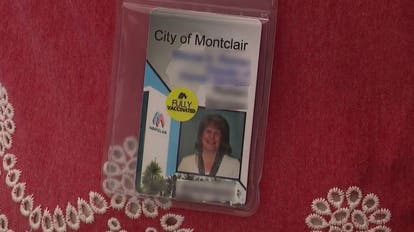
They have gathered their findings in a report entitled “A Region in Crisis,” which they forwarded to Gov. It also explains why this is so urgent for the people who are tracking this issue. This allows users to chart the development of these buildings across Southern California and visualize the footprint. It cuts through confusing government jargon – some cities label warehouses as “warehouses” whereas others rely on euphemisms such as “light industrial property” – and puts together a searchable, overarching look at the growth in warehouses in recent years. In response, Phillips and her colleagues produced a breakthrough, interactive map called Warehouse CITY. But calls for regional planning test the Inland Empire’s politics and its structure, leading to confusing, uncoordinated policy decisions. Warehouses typically are approved by local officials, often with little consideration for their impact on neighbors even though the cumulative effect of the new warehouses is regional rather than localized (pollution and traffic don’t stop at a city’s edge). The phenomenon also reveals holes in the region’s approach to planning. It’s merely a waystation for everything from pharmaceuticals to toys, arriving from Asia and making their way to points east of Fontana or San Bernardino. Indeed, most of the goods that pass through these warehouses are not bound for the Inland Empire at all. The growth in warehouses is in part a reflection of changes in the national and international economy. “They’ve made the choice not to care about the health impact.” “This is really, really scary,” she said in an interview, adding that some planners seem not to grasp the problem while others willfully ignore its implications. One of them is Susan Phillips, a professor of environmental analysis at Pitzer College and director of the Robert Redford Conservancy for Southern California Sustainability. Those findings are part of a groundbreaking project spearheaded by a group of activists and analysts who have created a database and map to track the growth of warehouses in the region. Since 2010, Fontana has approved more than 70 new warehouses, which cover some 860 acres and produce more than 16,000 truck trips a day. With a population of just over 200,000 people, Fontana houses distribution centers for Coca-Cola, Target, Smart & Final and FedEx, among others. Small cities such as Fontana show the effects of this hellbent absorption of warehouses. And, predictably, the negative effects of that pollution and related traffic congestion are overwhelmingly concentrated in neighborhoods inhabited mostly by Latinos and low-income residents. In just one year, from 2019 to 2020, the number of unhealthy air days in San Bernardino County jumped from 15% of the calendar to 20% of all days. The implications for climate change and personal health are daunting. The 4,000 warehouses that line the region’s transportation corridors generate some 600,000 truck trips every day, producing a staggering 50 million pounds of carbon dioxide. Warehouses are not standalone buildings they take in goods and move them out again – mostly with trucks, which burn fuel and clog up streets and highways. The Inland Empire has been quick to rebound from COVID and is chugging along at employment levels that resemble a pre-pandemic economy.īut warehouses and the industries they support also carry consequences. With that growth have come jobs and benefits. Nearly 40 square miles of the region’s land today sit beneath the roof of a warehouse. And individual warehouses are getting bigger, too. In 1980, the region was home to 234 warehouses there are now more than 4,000. Another 170 million square feet has either been approved and is awaiting construction, or is pending approval from a local government. Today, warehouses occupy about 1 billion square feet of the Inland Empire. The result: California’s Inland Empire has become home to a cascade of warehouses. It’s cheap dirt within a few hours’ drive of one of the world’s largest port complexes – Los Angeles and Long Beach together represent America’s chief point of importation from Asia – and well-positioned to feed the nation’s growing obsession with ordering goods online and expecting them to arrive instantly. Some dismiss it as the “land of cheap dirt.” This is the Inland Empire, home to more than 4 million people and perched at the periphery of Los Angeles. Beverly Hills and Hollywood are replaced by Pomona, Fontana, Rialto, Redlands. Following the release of a new report, a coalition is asking state leaders to intervene.ĭrive east from downtown Los Angeles, and the scenery thins out. But this growth also has consequences: more unhealthy air days in predominantly Latino communities. There are now more than 4,000, providing significant economic benefits for the region.

In 1980, the Inland Empire was home to 234 warehouses.


 0 kommentar(er)
0 kommentar(er)
